AT357- Final day
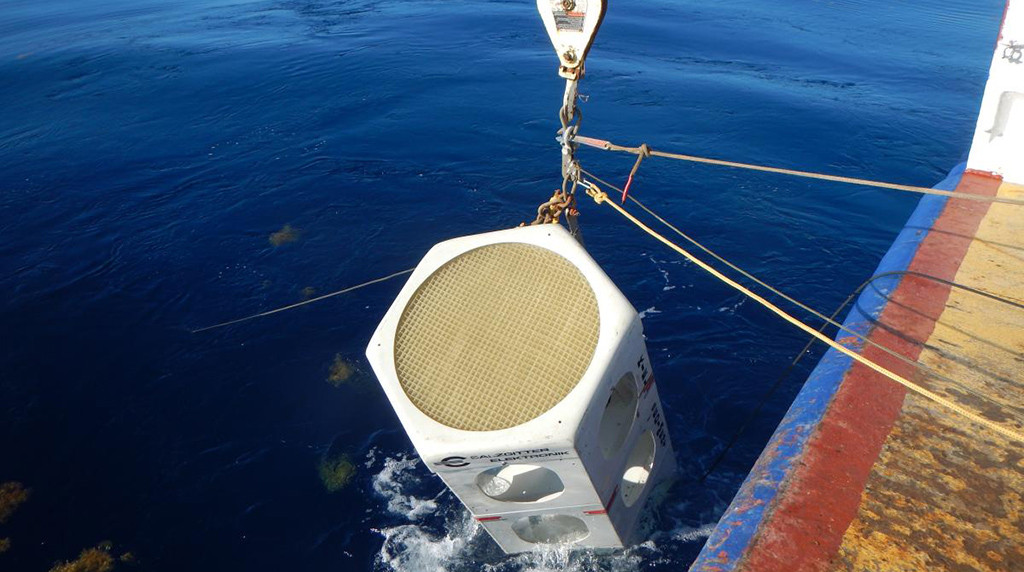
We arrived back at position #2 at some point during the night. The sediment trap and mooring was redeployed at 8:30 this morning. We are currently setting up the Mola Mola for its second deployment. There will be more pictures to follow when our internet access is a bit faster. However, here are a couple of shots from this morning.
Chris Chism
AT357

Latitude 27* 36.5' N Longitude 89* 43.2' W
We arrived at location 2 around 4:00 PM. The CTD was again deployed shortly before we headed to the mooring. Once we were within range of the mooring, Dr. Diercks sent the signal for release. Within a few minutes, the orange floatation devices appeared about 100 meters in front of the boat. The captain again positioned the Pelican so the crew and the wench could take over. We hauled in sediment trap #2 along with the battery powered release. We will be heading back to location #1 to deploy the Mola Mola while we are taking samples from the trap and refurbishing all mooring equipment for location #2.
Chris Chism
GC600- afternoon of day 2
The Mola Mola had a pressure test run this afternoon. This unit went down to 2000 meters to check for leaks. No leaks were found, so the team began replacing all electronics.
Chris Chism
GC600 - Day 2
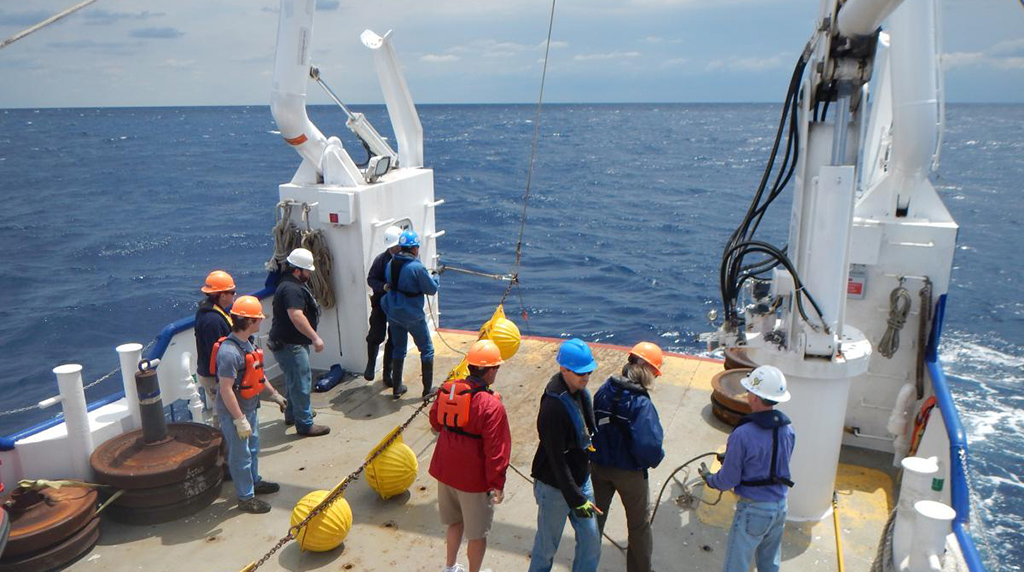
Today is a beautiful day! We woke up to much more calm conditions. The weather is clear and calm.
The crew worked most of the afternoon yesterday repairing and servicing the instruments to be redeployed. There were a few touch ups this morning as well. The CTD was dropped early this morning as well. Around 9:00 AM, we started the process of deploying the mooring. With safety in mind, this was a slow and steady process. At 9:50 AM, the mooring was deployed completely. We watched patiently as the 2000 lb weight submerged the yellow floatation devices. We are now off to position 2 to do more of the same. We are also looking forward to seeing Mola Mola in action if the weather cooperates.
From an outsider's point of view, it is pretty amazing and humbling to watch a group of people work in perfect unison to achieve their goals. There have been several bumps in the road; however, they have all come together to get these issues taken care of quickly and efficiently. It is truly an honor to be here.
Chris Chism
GC600- Sunday morning
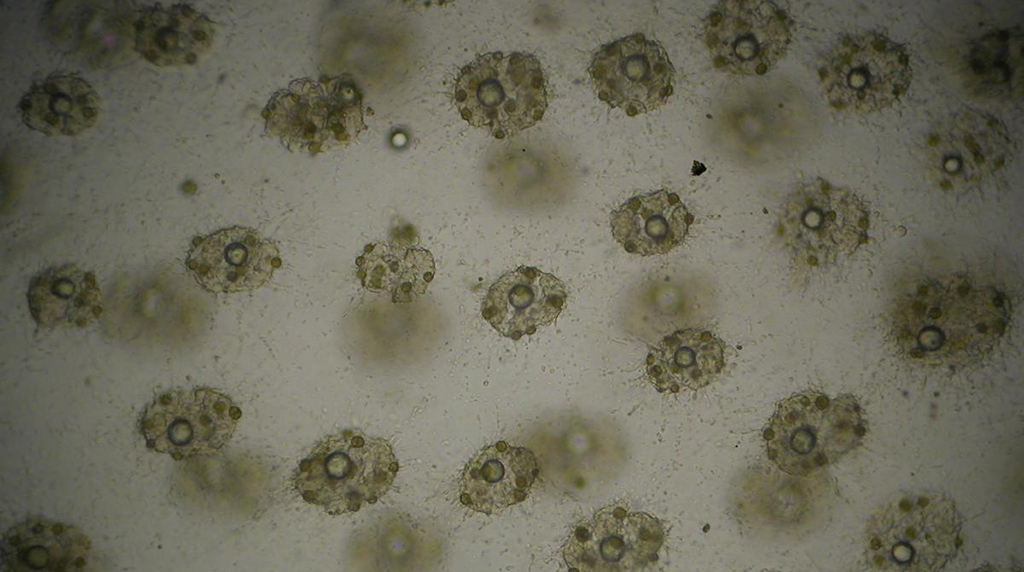
After heading back to position 2 during the night, we woke up to a beautiful morning. The skies are clear and sunny, and the gulf waves are being very cooperative at this point. The crew has spent most of the morning running through the final checklists with the Mola Mola. We should have this vehicle in the water very soon. The second sediment trap and release have now been cleaned and prepped for redeployment. Also, we took several samples from the water surface and the sediment trap. We placed some of the samples under the microscope as well.
Chris Chism
GC600 - Mola Mola Deployment
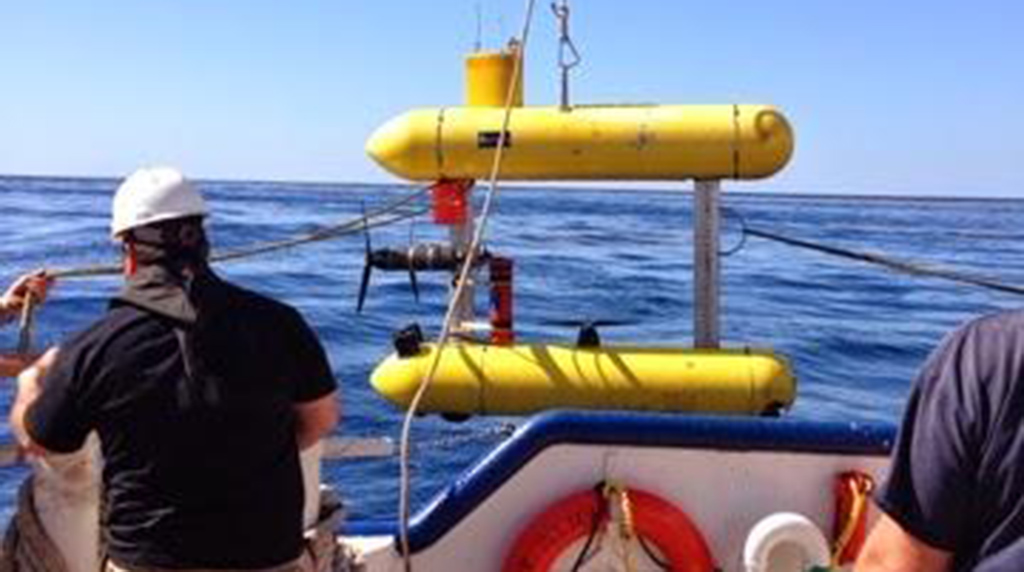
We deployed the Mola Mola this afternoon. The AUV stayed below for over three hours before recovery. Since the return, we recovered over 1700 pictures of the ocean floor that will ultimately be placed into a mosaic. The picture quality, even at a depth of 1200 meters, is excellent. We are currently heading back to location 2 to redeploy the sediment trap and possibly, weather pending, deploy the Mola Mola for a second time.
Chris Chism
GC600
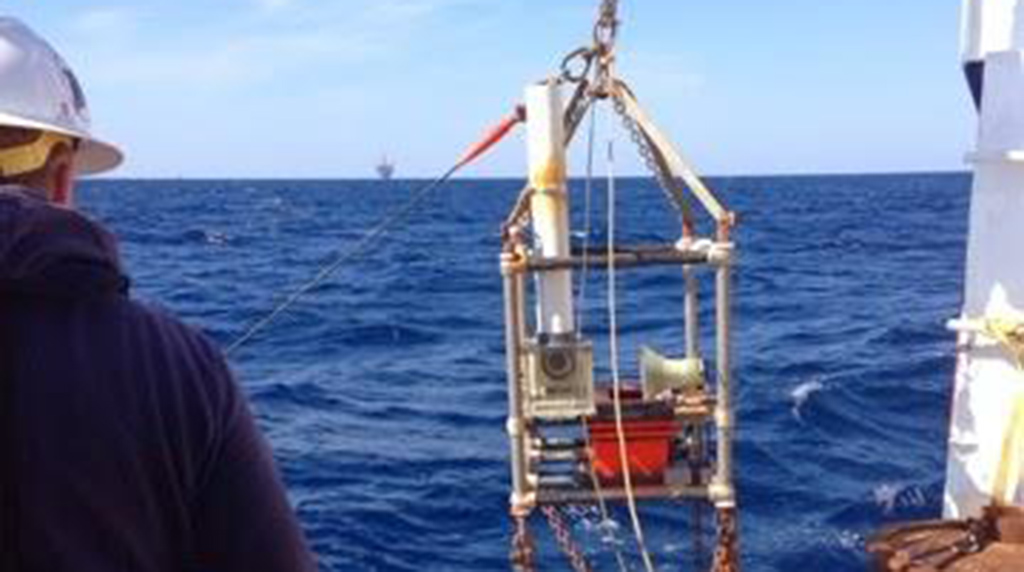
Latitude 27* 22' N Longitude 90* 30' W This morning we reached position 1. The crew dropped the CTD down to roughly 1300 meters. As this machine moves through the water column, the crew opens several canisters to collect water samples from differing depths. Dr. Passow and her crew collected these samples to test on board. Several samples were saved to take back to the lab as well. The next stop this morning was the mooring. We dropped the transponder over the rail of the boat and pinged the mooring. When communication was established, a signal to release was sent. Within 20 minutes, the yellow floats appeared on the surface. The captain positioned the boat so the crew and the crane could take over. The sediment trap came in first. The camera, the Doppler, and the release followed shortly thereafter. While the instrumentation worked perfectly, the cages and frames were compromised a good bit by the water chemistry located here.
Chris Chism

















 back to top
back to top